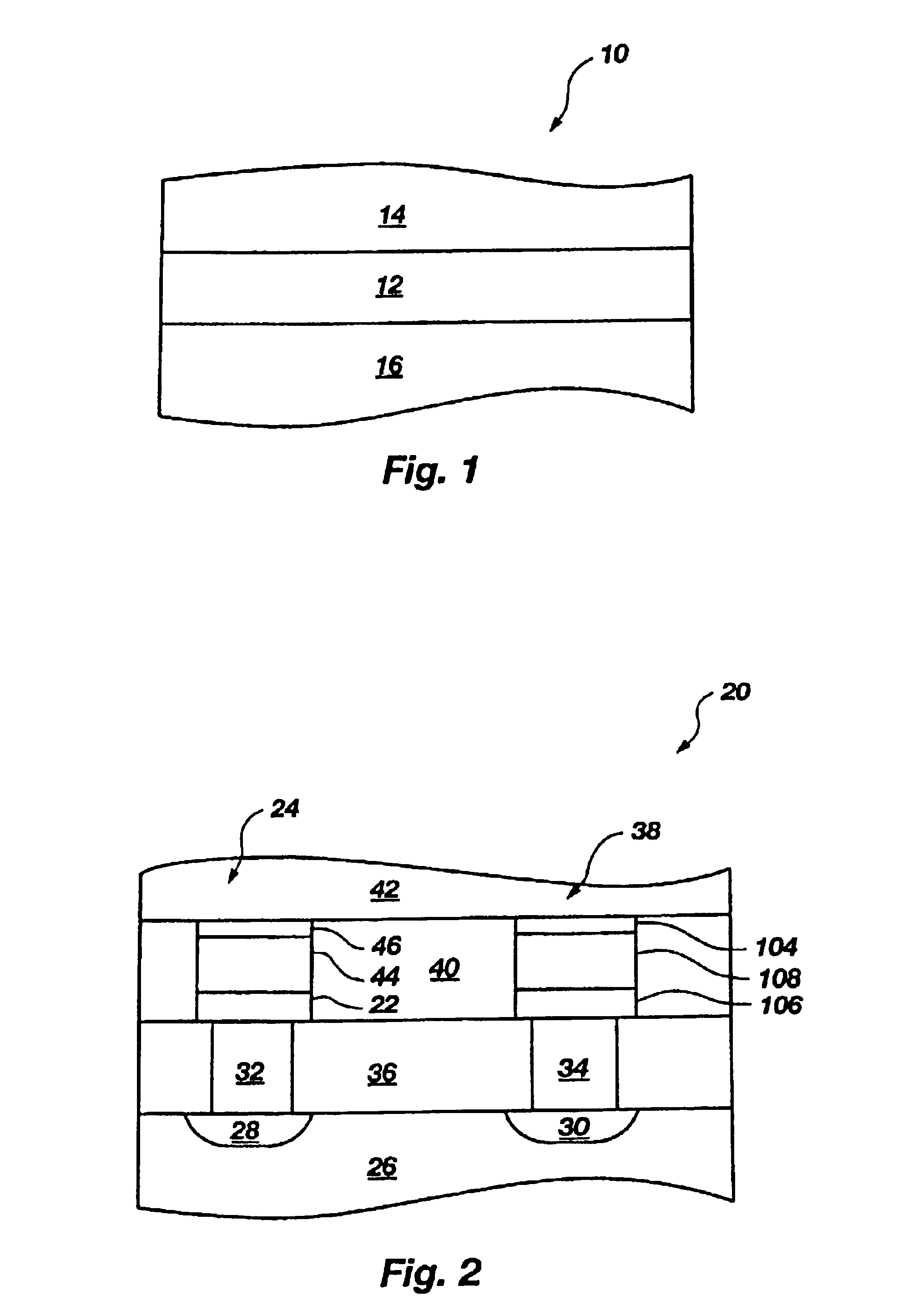Method of using tantalum-aluminum-nitrogen material as diffusion barrier and adhesion layer in semiconductor devices
a technology of tantalum-aluminum-nitrogen and diffusion barrier, which is applied in the direction of semiconductor devices, semiconductor/solid-state device details, electrical apparatus, etc., can solve the problems of product defects, unsatisfactory effects, and the tendency of conventional diffusion barriers such as tin and tiw to fail at elevated temperatures, so as to promote adhesion with surrounding layers, improve thermal stability, and less attractive
- Summary
- Abstract
- Description
- Claims
- Application Information
AI Technical Summary
Benefits of technology
Problems solved by technology
Method used
Image
Examples
Embodiment Construction
[0022]FIG. 1 shows a partial cross-sectional view of a semiconductor wafer 10 having a tantalum-aluminum-nitrogen (Ta—Al—N) layer 12 between two adjacent layers 14, 16 according to an embodiment of this invention. The Ta—Al—N layer 12 is a conductive alloy formed as a mixture and / or as a compound of tantalum, aluminum and nitrogen. The mixture need not be homogeneous at a microscopic scale. However, an admixture of the elements occurs throughout the Ta—Al—N layer 12.
[0023]The Ta—Al—N layer 12 has desirable properties for serving as a barrier layer, for serving as a wiring line cap layer, for promoting adhesion between adjacent layers, or for defining a contact or electrode. The adjacent layers 14, 16 are formed by any of conductive, non-conductive or semiconductive materials. Typically, the Ta—Al—N layer 12 is between 50 Å and 6000 Å thick. The Ta—Al—N material includes respective atomic concentrations of aluminum, tantalum and nitrogen as follows: between 0.5% and 99.0% aluminum; b...
PUM
 Login to View More
Login to View More Abstract
Description
Claims
Application Information
 Login to View More
Login to View More - R&D
- Intellectual Property
- Life Sciences
- Materials
- Tech Scout
- Unparalleled Data Quality
- Higher Quality Content
- 60% Fewer Hallucinations
Browse by: Latest US Patents, China's latest patents, Technical Efficacy Thesaurus, Application Domain, Technology Topic, Popular Technical Reports.
© 2025 PatSnap. All rights reserved.Legal|Privacy policy|Modern Slavery Act Transparency Statement|Sitemap|About US| Contact US: help@patsnap.com



